CAPITOL REEF (Day 23 - part 4)
I walked up just at the program started. Cindy, our ranger, gave us the history of this area and the Fremont people. Much of it I had already learned over the past two days, but she had a lot of other interesting points as well.
She started out by saying that no one here is really 'native.' Even the original Americans came from elsewhere, across the Bering Land Bridge following the woolly mammoth during the last ice age some 10,000 years ago. The only evidence they left were fluted spear points. Eventually the ice age ended; animals went extinct, and the people had to adapt. They started following animal migrations... deer, bison, antelope. Fast forward to some1,300 years ago when farming was introduced from the south... and then the Fremont people. Suddenly they no longer had to travel. This meant that even kids could work now since life was not as dangerous with constant exposure to predators and cold.
Instead of using the bow and arrow that other groups used, the Fremont preferred the atlatl. They also lived in pit houses, not cliff dwellings such as the ancestral Puebloans to the south. They wore moccasins, not sandals, since these provided better traction on the slick rock. They had some pottery (unfired) but mostly used baskets. They knew how to even make baskets that could hold water. They would split willow reeds and interweave them with other fibers, such as yucca. When the willow reeds would get wet, they would swell up, causing the basket to be watertight.
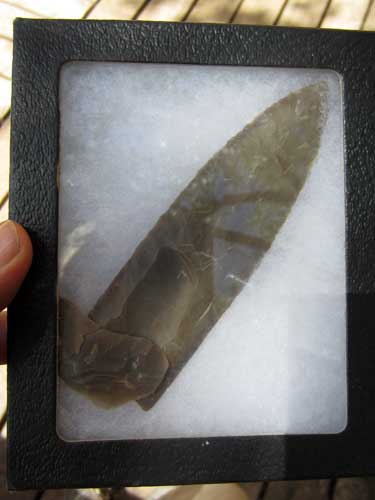
A spear point

With the help of an atlatl, a hunter could now throw a spear twice as far and twice as fast. It's like one of those tennis ball throwers for a dog.
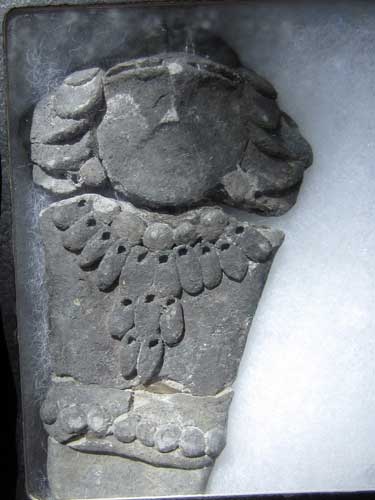
An unfired clay figurine, an art distinctive to the Fremont people. They always made a male and female pair.
We don't know really know the meaning of the petroglyphs. All we can do is make educated guesses based on the stories and culture of modern day local tribes.

Is this... the story of creation (how the people emerged through a portal from the underworld)? A rainmaker? A fertility god with crops?
After the talk, I discovered a boardwalk on the far side which hadn't seen before. I encountered one woman who was getting quite frustrated because couldn't find any petroglyphs. I pointed some out to her. She said she was expecting something MUCH bigger, as in the size of the entire cliff!

The boardwalk around the cliff



It was very, VERY hot... even under the shade of the trees.

It was so warm, actually, that the turpentine seemed to be melting right out of the wood! At least it smelled like it!


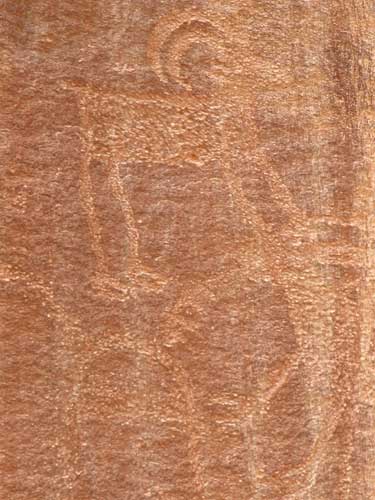
I then popped up the street for a view of the domes. These are small remnants from a vast, ancient desert of shifting dunes. Eventually these large piles of and were covered by sediments deposited in wetter environments. These help cement and compact the sand into the patterns of the original dunes. Eventually they were exposed again by uplift and erosion.


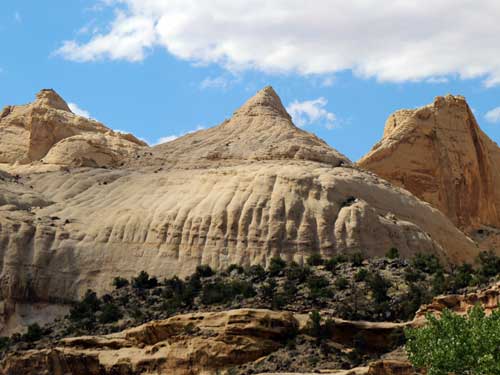
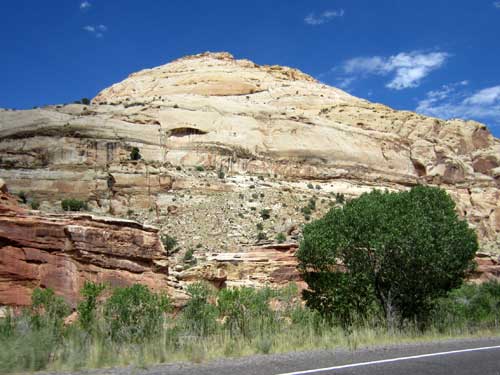
I returned to my tent for a few hours until the evening brought with it some cooler air. At 8:45 pm was a ranger program on archeology at the nearby amphitheater. So I walked on over.

Solar lights guide the way.

Tiny bats flew overhead. There was lots for them to eat here!

Interpretive ranger Dalton was a wealth of information and stories.
The Fremont extended all over Utah. They were divided into several different groups. This area was home to the San Rafael or True Fremont.

The groups are based largely on differences in ceramic production and location.
They were very isolated, with their primary focus being on survival. Their pithouses were kind of like a basement. They were the same temperature all year round (in the 50's F) and were easy to heat. They never had a large population and never domesticated animals.

A traditional pithouse
The river flooded frequently, so they often lived up to a mile away. Waterproof baskets were much better than heavy, leaky unfired pots (which would break if dropped) for carrying water long distances. They used a special method called split one-rod-and-bundle.

They were good farmers and grew crops of corn, squash and beans. The corn, called Fremont Dent Corn, was not like that of today. The ears were very, very tiny, and the stalks were not even waist high. But it was resistant to drought and cold and only needed a short growing season. Since the river never dried up, they could build reliable irrigation systems. They also dried out the corn and stored it in small, mud-plastered stone granaries for winter. Seeds nowadays will last for about one year... but some Fremont seeds are still good 1,000 years later!

In spite of conditions being tough, they still clearly had a good life. How can we tell? Because enough food = spare time = cultural development. Basically, they had enough time to think about things and be creative. They made pottery, baskets, elaborate painted figurines, petroglyphs, knew about hunting and irrigation, had elaborate clothing and even jewelry such as elk bone necklaces (if they were starving, they would have made the bones into soup). Unfortunately so much of our knowledge of these people has been lost due to looting.
return • continue

